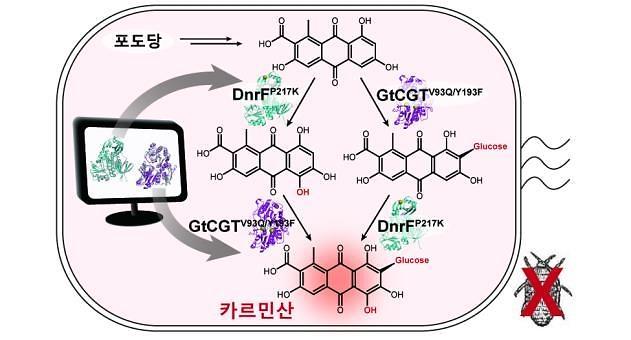
[Courtesy of KAIST]
SEOUL -- Carminic acid is an aromatic polyketide widely used as a natural red colorant. It has long been produced by the cumbersome farming of some scale insects, such as cochineal. The path to carminic acid biosynthesis has not been fully identified, making it difficult to develop a microorganism that produces carminic acid.
A research team from the state-run Korea Advanced Institute of Science and Technology (KAIST) has developed Escherichia coli (E. coli) strains that can produce carminic acid using glucose produced from biomass such as waste wood and weeds as energy sources.
"It is the first time in the world that we have established a production route for carminic acid that does not use cochineal," said Yang Dong-soo, a KAIST professor of bioprocess engineering. "Mass production is possible in a few years through technology transfer."
The research team said the enzyme developed can be applied to produce carminic acid and aloesin, a chromone derivative isolated from aloe vera and has many biological effects such as wound and burn healing properties. The research paper on the complete biosynthesis of carminic acid from glucose in engineered E. coli was published on the website of the Journal of the American Chemical Society.
"The strategies described here will be useful for the design and construction of biosynthetic pathways involving unknown enzymes and consequently the production of diverse industrially important natural products," the paper said.
Copyright ⓒ Aju Press All rights reserved.



